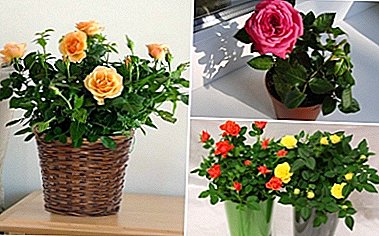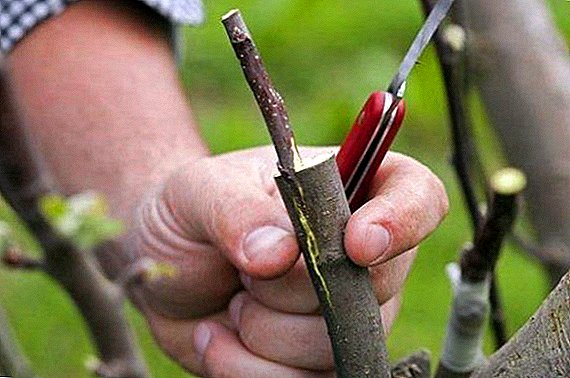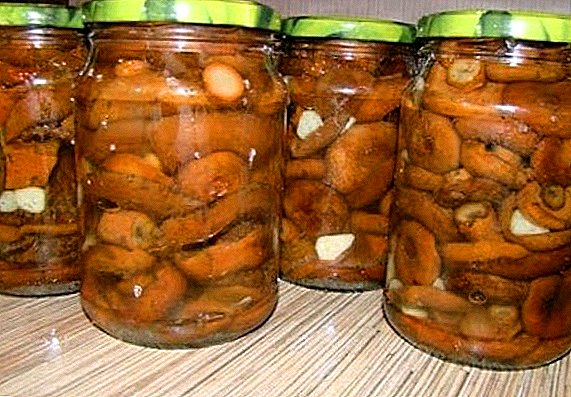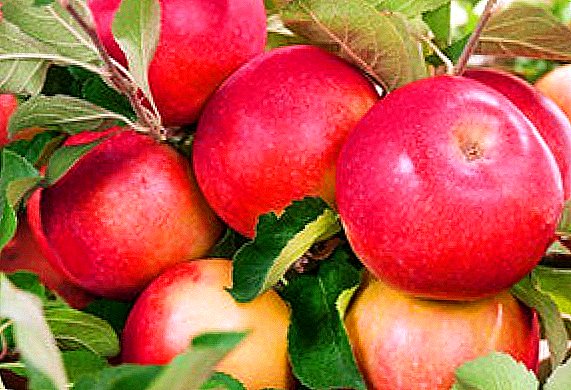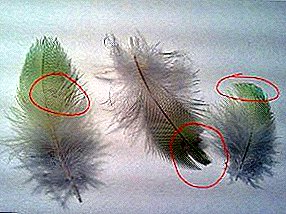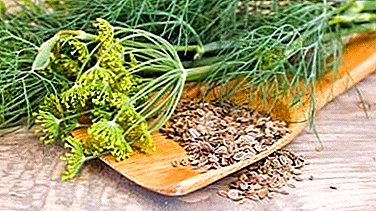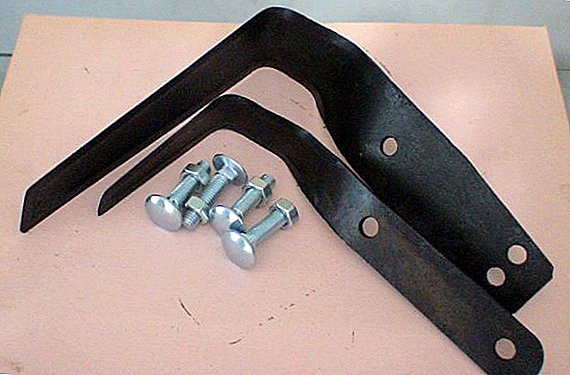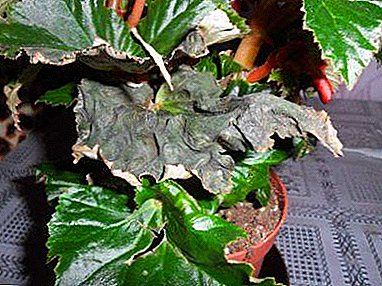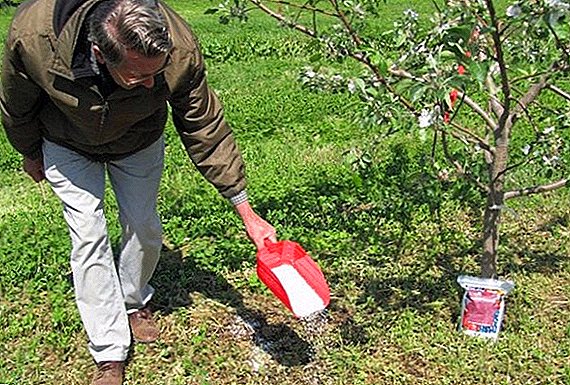 Each apple tree in the period of active growing season needs nutrients. Therefore, the further growth and fruiting of the crop depends on the timeliness and literacy of the fertilizers. How to fertilize apple trees in spring, which method to choose and what to bring at a particular stage of development - all this will be discussed later in the article.
Each apple tree in the period of active growing season needs nutrients. Therefore, the further growth and fruiting of the crop depends on the timeliness and literacy of the fertilizers. How to fertilize apple trees in spring, which method to choose and what to bring at a particular stage of development - all this will be discussed later in the article.
How to fertilize apple trees in spring
The phase of intensive biomass buildup requires additional nutrition with nitrogen-containing substances. In the spring, before bud breaks, gardeners apply manure, compost or mineral complex fertilizers for apples. Experts do not distinguish the best or worst of them, but note that nitrogen contributes to enhanced growth and abundant fruiting. Apples lacking this substance lose significantly in appearance and taste.
Check out such apple varieties as Medunitsa, Bogatyr, Spartan, Lobo, Mechta, Uralets, Melba, Bely Naliv, Kandil Oryol, Silver Hoof, "Antey", "Star", "Screen", "Sun", "Semerenko".Let's try to understand in more detail the features of organic and mineral fertilizers for apple trees, which are recommended to be made in spring.
Did you know? In the world, the largest producers of apples are China and the United States of America. On the territory of Europe, Poland won the championship in the export of these fruits.Among organic matter, mullein, bird droppings and compost are popular. Fresh manure is not recommended for trees.
 To prepare the working solution is prepared infusion, which is diluted with cold water in a ratio of 1:15 parts. The amount of liquid is calculated in such a way that at a time to use everything, leaving no residue. On average, 1 square. m pistvolnoy wells need to make up to 8 kg of organics.
To prepare the working solution is prepared infusion, which is diluted with cold water in a ratio of 1:15 parts. The amount of liquid is calculated in such a way that at a time to use everything, leaving no residue. On average, 1 square. m pistvolnoy wells need to make up to 8 kg of organics.Some summer residents scatter dry crushed bird excrement, but in this case it will take time and moisture to penetrate the nutrients to the roots. Agronomists note the positive impact of cow dung on sandy and clayey soil.
Important! Apple trees do not develop well in an acidic environment. It is recommended to adjust the oxidized soil every 3- 4 years to make dolomite flour, lime or ordinary cement dust.With regular feeding, its structure and ability to retain water noticeably improves. Compost has a similar effect on the substrate, which is obtained from fallen leaves, sawdust and household waste.
 The list of spring mineral fertilizers recommended for apple orchards is limited to ammonium sulfate, potassium sulfate and micronutrient fertilizers. In each of the purchased products contains in varying degrees, the active ingredient, as indicated on the package.
The list of spring mineral fertilizers recommended for apple orchards is limited to ammonium sulfate, potassium sulfate and micronutrient fertilizers. In each of the purchased products contains in varying degrees, the active ingredient, as indicated on the package.According to agronomists, mineral complexes are not fully absorbed by the root system of tree crops. For fruit, it is sufficient per square meter of the stalk zone within 10-40 g of the active chemical element. You can make it in both dry and in liquid form.
Important! Sawdust and other parts of coniferous crops are not recommended to be used for making compost or mulch under apple trees. The fact is that this material contributes to soil oxidation, which is highly undesirable for an apple orchard.For example, if you purchased ammonium nitrate for spring dressing of apple trees, then you will need 20 g of the substance for a bucket of water, and up to 30 g per square meter for embedding into the ground.
 For dry fertilizers, ammonium sulfate is often used, which contributes to the improvement of the qualitative and quantitative characteristics of future apples and remains for a long time in the ground. Depending on the age of the tree and the method of fertilizer will need about 25-50 g of the drug.
For dry fertilizers, ammonium sulfate is often used, which contributes to the improvement of the qualitative and quantitative characteristics of future apples and remains for a long time in the ground. Depending on the age of the tree and the method of fertilizer will need about 25-50 g of the drug.The intensity of the growing season and the number of the formed ovary are largely dependent on potassium intake. Potassium sulphate is recognized as the best of this group of fertilizers. To obtain a full-fledged development and a bountiful harvest, it will be enough to deposit 10–25 g of substance for each barrel.
You will also be interested to learn about pruning apple trees in spring and autumn.
Apple root dressing
Most gardeners prefer this method of fertilizer application. It is considered more effective because it provides direct penetration of nutrients into the root system of the plant. How to feed an apple tree in spring depends on the phase of its development: before flowering, during and after it.
Only for the season will need no more than 3-4 feedings. We will understand in detail. 
Before flowering
In the last decade of April, it is important to fertilize the tree to feed its viability, the formation of friendly inflorescences and annual growth.
To this end, experienced gardeners scatter around 5-6-6 buckets of humus around apple trunks. You can replace it with a half kilogram dose of urea, which is also introduced under the plants in a dry form.
Did you know? From hundreds of seeds collected from the fruits of one tree, completely different apple trees will grow.
In the flowering period
The second feeding of apple trees is carried out during the blooming of floral brushes. And it is impossible to delay this process. It is important to fertilize fruit crops at the beginning of budding. For this purpose, mainly liquid dressings of 800 g of potassium sulfate, 1 kg of superphosphate, 10 liters of slurry and 5 liters of bird droppings are used.  All components are dissolved to a uniform consistency in a 200-liter barrel with water. If you have no organic ingredients, you can replace them with 0.5 kg of urea or with 2 vials of Effectan.
All components are dissolved to a uniform consistency in a 200-liter barrel with water. If you have no organic ingredients, you can replace them with 0.5 kg of urea or with 2 vials of Effectan.
The mixture should be infused for 7 days. Then it is poured into the half-meter-deep grooves made in the stem circles.
On average, under 1 apple tree you need to pour up to 40 liters of nutrient fluid. Total solution is enough for 5 trees. Experienced owners advise to pre-moisten the tree trunks so that the fertilizer dissolves faster and penetrates to the roots. After the manipulations, the holes are sealed and the ground is watered again.
Important! In the bookmarking phase of the next year's fruit buds, which roughly falls on July and August, it is impossible to fertilize apples with nitrogenous substances. They adversely affect the winter hardiness of the culture. During this period, recommended phosphorus-potassium mixture.
After flowering
When the branches begin to fill the apples, the tree needs the following feeding. For this purpose, a solution is prepared from 1 kg of nitrophoska and 20 g of powdered dry "Humate naltrium".  The last component must first be dissolved in a small amount of water. All ingredients are poured into a 200-liter barrel of water and mixed thoroughly. Watering adult apple trees is carried out with a calculation of 30 liters under 1 trunk.
The last component must first be dissolved in a small amount of water. All ingredients are poured into a 200-liter barrel of water and mixed thoroughly. Watering adult apple trees is carried out with a calculation of 30 liters under 1 trunk.
Foliar application of apple trees in spring
Spraying crowns of apple trees is often carried out as an additional fertilizer, which is combined with preventive and curative measures against diseases and pests. To do this, use a solution of urea in the proportion of 60 g of substance on a bucket of water.
The first sprinkling is organized before the flowers open, the second - during flowering, and the third - after 20 years later. It is desirable that the liquid fell not only on the foliage, but also on the trunk and skeletal branches.
In addition, caring owners indulge their apple orchards every 2 weeks with manganese, boric, potassium, zinc, and molybdenum treatments. Some use multicomponent purchasing products, which include all the necessary trace elements.  One of these is Kemira. The working solution is prepared from it at the rate of 10 g of the drug per bucket of water.
One of these is Kemira. The working solution is prepared from it at the rate of 10 g of the drug per bucket of water.
Important! When buying store complex preparations for fertilizing apple trees, carefully study the composition of the drug, make sure that it does not have chlorine.Foliar fertilizing of fruit crops can be done not only by means of purchase. For these purposes, wood ash is quite suitable, which contains a lot of calcium, potassium and phosphorus.
Her mother liquor is prepared at the rate of 1 cup of ground matter per 2 liters of warm water. Then the liquid is dissolved in a 10-liter bucket.
Did you know? In one apple, the average size of not more than 80 calories.Other summer residents spray trees with a mixture of 1 teaspoon of urea, 0.5 liters of slurry and 10 liters of water. Before working, the fluid must be filtered so that the solid particles do not clog the sprayer. Young apple trees especially need such top dressings in the spring.

Useful tips
In order not to harm the apple trees by excessive and illiterate introduction of nutrients, assess the external condition of the trees in the garden.
Experts focus on the colors of foliage, according to which the missing trace elements are obvious at first glance:
- If the apple lacks nitrogen, its leaves look pale and cannot fully develop to their full size. Old specimens become yellow and lifeless, crumbling prematurely. Fruits ripen, but differ in small sizes.
- Unnatural foliage indicates the lack of phosphorus. In this case, the leaves are far behind in growth, there are few of them on the branches.
- On potassium deficiency can be concluded with a smoky shade on the leaves. Over time, they become dry, but do not fall from the branches. Apples on such a tree are very unsightly.
- The lack of iron leads to the development of chlorosis, which is reflected in the loss of green color on the foliage. As the disease progresses, the leaf plates fade altogether.
- If an apple tree needs zinc, its leaves no longer develop, cannot reach their usual size, and start gathering in sockets. A tree yield is reduced by half.
- When young sprouts have withered for no reason, consider this signal as a shortage of copper. Young apple trees suffering from a deficiency of this trace element do not grow high, become prone to tillering, and their leaf blades thickly cover with black spot.
- Failure of boron is expressed by prematurely yellowed foliage. It has a clear view of purple streaks, and apples are affected by corking. Moreover, such trees, even in spite of genetic frost resistance, hibernate badly and become very sensitive to a decrease in temperature.
 Remember: excess nutrients are as dangerous as lack of nutrients. Therefore, in all respects to observe the measure, and your apple trees will thank for the care of a generous harvest.
Remember: excess nutrients are as dangerous as lack of nutrients. Therefore, in all respects to observe the measure, and your apple trees will thank for the care of a generous harvest.

